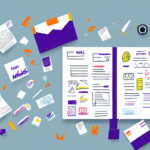The Importance of Customer Retention for Business Growth
As a business owner, attracting new customers is essential, but retaining existing customers is even more crucial for the long-term success of your company. Customer retention not only fosters loyalty but also drives sustained business growth. In this section, we'll delve into why customer retention is vital and the various benefits it brings.
Cost Efficiency in Customer Acquisition
Acquiring new customers can be up to five times more expensive than retaining existing ones. Focusing on customer retention allows businesses to allocate resources more effectively, reducing overall marketing and acquisition costs. Harvard Business Review highlights the significant cost savings associated with retaining customers versus acquiring new ones.
Enhancing Brand Reputation
Consistently delivering positive experiences helps build a strong brand reputation. Loyal customers are more likely to share their positive experiences, leading to increased brand awareness and credibility in the market. This organic promotion can be a powerful driver of business growth.
Revenue Growth Through Loyalty
Loyal customers tend to make repeat purchases and spend more over time. According to a study by Accenture, increasing customer retention rates by just 5% can boost profits by up to 95%. This emphasis on retention can lead to substantial revenue growth without the constant need for new customer acquisition.
Establishing a Customer Retention Department
A dedicated customer retention department plays a pivotal role in maintaining and enhancing customer relationships. This section explores the functions of such a department and the strategies it employs to keep customers engaged and satisfied.
Developing Retention Strategies
The primary responsibility of a customer retention department is to devise and implement strategies that encourage customers to continue doing business with the company. This includes loyalty programs, personalized communication, and targeted marketing campaigns designed to meet the specific needs and preferences of customers.
Cost-Effective Marketing
Focusing on retaining existing customers can significantly reduce marketing and advertising expenses. Retention strategies are often more cost-effective than acquiring new customers, allowing businesses to reallocate resources to other critical areas. Forbes discusses the financial benefits of prioritizing customer retention.
Gathering and Utilizing Customer Feedback
Collecting feedback is essential for understanding customer needs and identifying areas for improvement. By actively listening to customers, businesses can make informed decisions that enhance products or services, thereby increasing customer satisfaction and loyalty.
Enhancing Customer Satisfaction through Retention Efforts
Improving customer satisfaction is a direct outcome of effective retention strategies. This section examines how a customer retention department contributes to higher satisfaction levels and addresses customer pain points.
Proactive Customer Service
Providing exceptional customer service ensures that customers feel valued and supported. Addressing concerns promptly and efficiently leads to increased satisfaction and fosters long-term loyalty.
Identifying and Solving Pain Points
Analyzing customer behavior and feedback helps identify common issues that may cause frustration. By resolving these pain points, businesses can enhance the overall customer experience, leading to greater satisfaction and retention.
Building Customer Loyalty
Loyal customers are invaluable assets, providing steady revenue streams and acting as brand ambassadors. This section explores how a customer retention department can cultivate loyalty through various initiatives.
Implementing Rewards Programs
Rewards programs incentivize repeat business by offering discounts, exclusive offers, or other perks. These programs not only encourage customers to return but also provide valuable data on customer preferences, enabling more personalized marketing efforts.
Resolving Complaints Effectively
Efficiently addressing and resolving customer complaints is crucial for maintaining trust and loyalty. A dedicated retention team ensures that customer issues are handled with care, reinforcing the company's commitment to customer satisfaction.
Strategies for Creating an Effective Customer Retention Department
Establishing a successful customer retention department requires strategic planning and implementation. Here are key strategies to consider:
Setting Clear Goals and Objectives
Define specific, measurable goals for the retention department, such as improving retention rates, increasing customer lifetime value, or enhancing customer satisfaction scores.
Leveraging Data Analytics
Utilize data analytics to monitor customer behavior, track retention metrics, and identify trends. This data-driven approach enables businesses to make informed decisions and tailor retention strategies effectively.
Training and Development
Equip the retention team with the necessary skills and knowledge through comprehensive training programs. Focus on areas such as communication, conflict resolution, and data analysis to ensure the team can effectively implement retention strategies.
Measuring the Success of Your Retention Efforts
To gauge the effectiveness of your customer retention strategies, it's essential to track key performance metrics. This section outlines the critical metrics to monitor and how they inform your retention efforts.
Customer Satisfaction and Retention Rates
Regularly measure customer satisfaction through surveys and feedback forms. Additionally, track retention rates to assess how well your strategies are keeping customers engaged over time.
Customer Lifetime Value (CLV)
CLV measures the total revenue a customer is expected to generate throughout their relationship with your company. Understanding CLV helps identify high-value customers and tailor retention efforts to maximize their value.
Overcoming Challenges in Customer Retention
Establishing a customer retention department comes with its own set of challenges. This section discusses common obstacles and strategies to overcome them.
Resource Allocation
Ensuring that the retention department has adequate resources is crucial. This includes budget, technology, and skilled personnel to implement effective retention strategies.
Employee Buy-In
Gaining support from other departments and ensuring that the entire organization values customer retention is essential for its success. Promote a customer-centric culture to reinforce the importance of retention efforts.
Measuring Effectiveness
Develop clear metrics and KPIs to assess the effectiveness of retention strategies. Regularly review and adjust strategies based on performance data to ensure continuous improvement.
Future Trends in Customer Retention
Staying ahead of emerging trends in customer retention can provide a competitive edge and ensure long-term business success. This section highlights future trends to watch and how they can be integrated into your retention strategies.
Personalized Communication
Advancements in technology enable more personalized and targeted communication. Leveraging AI and machine learning can help tailor interactions to individual customer preferences, enhancing the overall experience.
Increased Focus on Customer Experience
Providing a seamless and exceptional customer experience across all touchpoints remains a priority. Investing in customer experience management tools and strategies can significantly boost retention rates.
Integration of Omnichannel Strategies
Adopting an omnichannel approach ensures consistent and cohesive customer interactions across all platforms, whether online or offline. This integration fosters a more unified and satisfying customer journey.
Conclusion
Investing in a customer retention department offers numerous benefits, including increased revenue, enhanced customer satisfaction, and a loyal customer base. By implementing effective retention strategies, leveraging data analytics, and staying attuned to industry trends, your business can foster long-term success and maintain a competitive edge in the market.






















